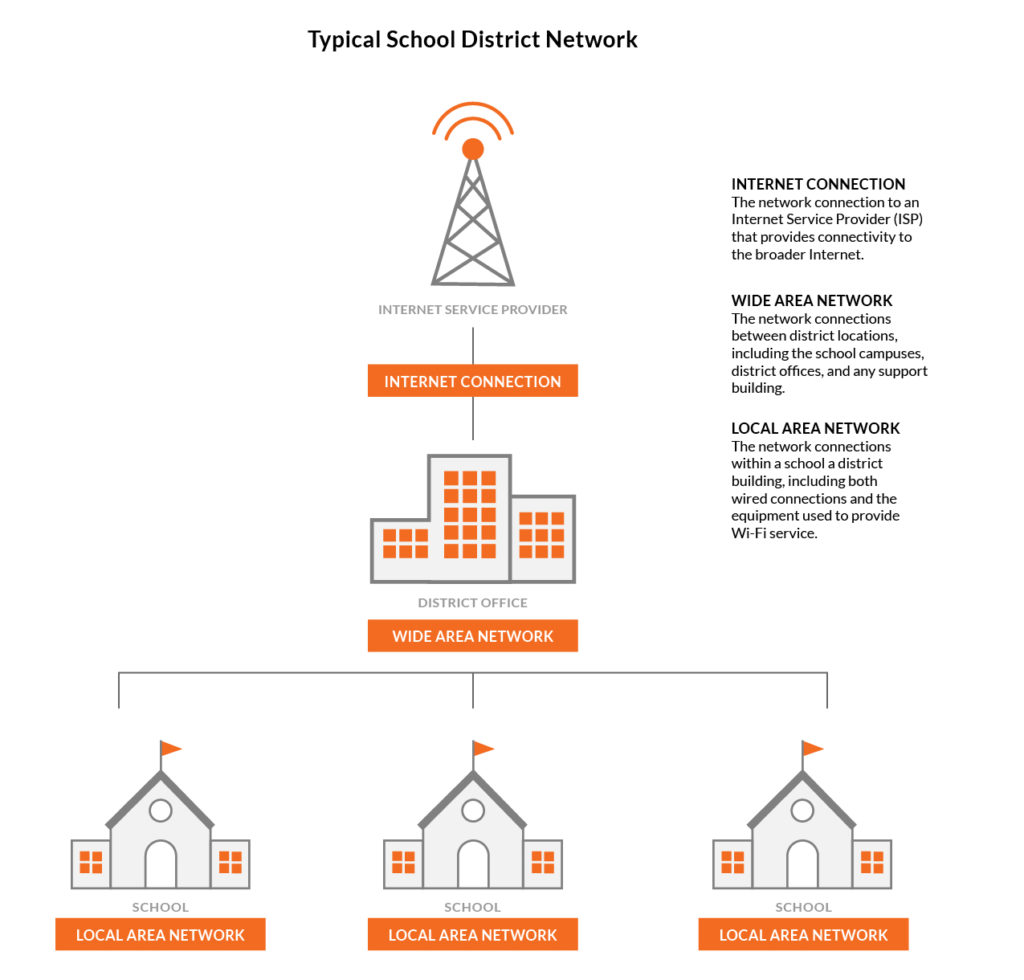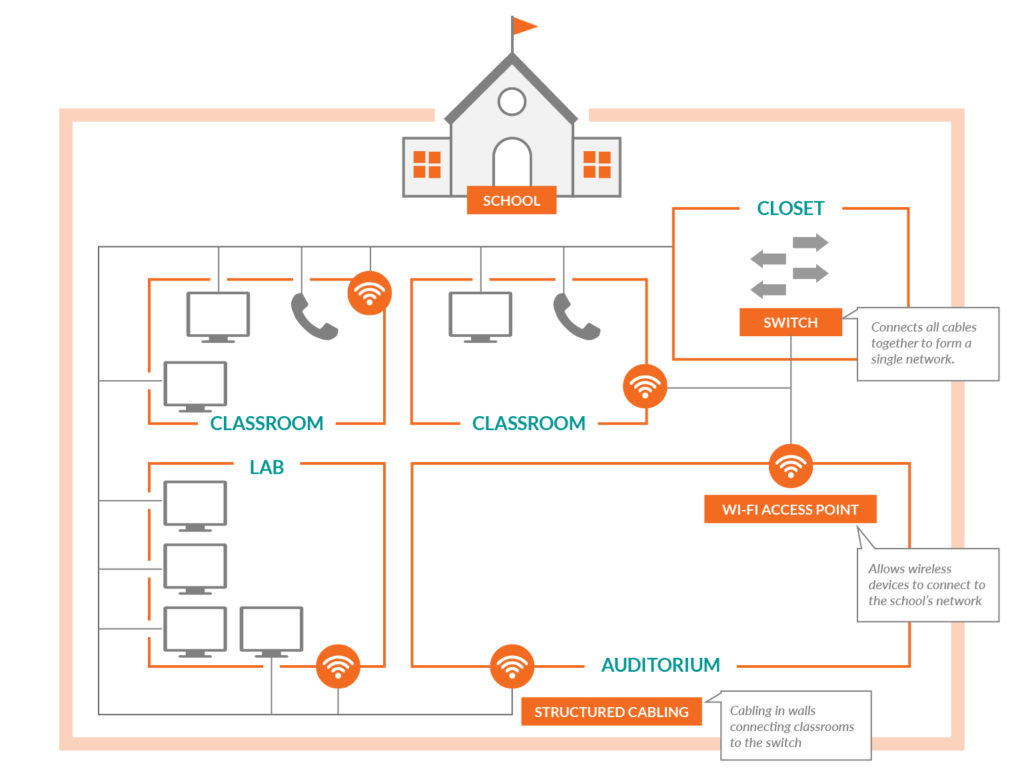There are three prerequisites to improving school connectivity:
1. Every School Needs Access To Fiber
Every school needs a fiber-optic (or alternative scalable bandwidth) connection. It is the most cost-effective way to deliver high-speed connectivity. Districts with fiber connections on average have 10x more bandwidth.
2. Bandwidth Must Be Affordable
The cost of broadband access has continuously decreased since 2013. From $22 per Mbps in 2013, the cost of broadband today is at $3.26 per Mbps. However, affordability still remains a challenge for school districts as there continues to be significant variation in what districts pay for Internet access, especially for higher-bandwidth circuits.
3. Every Classroom Must Have Robust Wi-Fi
Wireless technology allows for connectivity to reach all the way to students’ devices and enables the rich digital learning that can transform our education system. The FCC has allotted $150 per student over the course of 5 years from 2014-19 totaling to over $5B in available funds to upgrade internal networks in every classroom.
The first step in any successful network upgrade is to understand the basic structure of a school district’s network. With a good grasp of the fundamentals of a district’s network setup, school district leaders will be better prepared to communicate with their technology teams and network vendors to accomplish successful network upgrades for their schools. The diagram below provides a high-level overview:
Now take a closer look at a network within an individual school building—this is the Local Area Network or LAN.
School Local Area Network
With this basic network layout knowledge at hand, the next step is to plan for the upgrade—
Check out our accompanying blog that helps you plan for your school districts broadband budget and estimate the amount of bandwidth your network needs to meet your digital education goals.
For more information on planning your broadband network upgrade explore our free tools and resources.
Other blogs in this series
1 – Plan for your school districts broadband budget
2 – Planning for your future bandwidth needs
3 – Securing buy-in for your upgrade
4 – Successful Procurement





